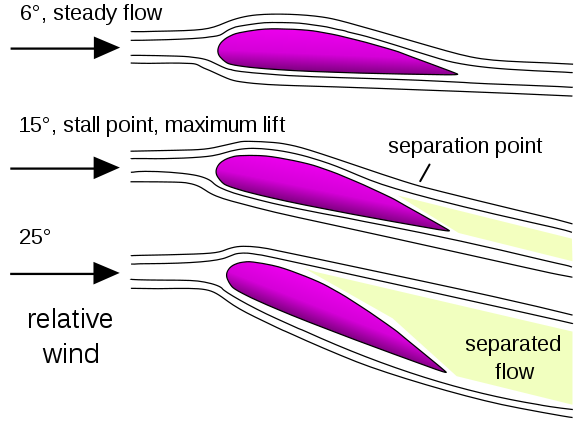How would you explain aerodynamic stall?
Put simply, a wing is a surface that encourages moving air to follow its contours (“laminar flow”). By doing so, it creates lift. As the angle between the wing and the air increases (“angle of attack”), it gets harder and harder for the air to follow the surface of the wing. At some point (“critical angle of attack”), the airflow detaches from the wing’s surface and forms turbulent eddies. At this point the wing is no longer generating lift, and is stalled. This picture should help you visualize this condition:

(Note that there are a horde of aeronautical engineers at the ready to type out long explanations about why what I just said isn’t quite technically correct, but for a layman’s definition, I argue that it is sufficient.)
The reasons that the critical angle of attack could be reached are numerous. The most obvious one is speed: As the aircraft slows down, more lift is needed to maintain altitude against weakening airflow over the wings. To generate more lift, the angle of attack must be increased, and thus the airplane must be pitched up. Below a certain speed, the critical angle of attack is reached and the airplane stalls.
This however leads to the misconception that a stall is strictly due to being “too slow.” This is an oversimplification. You can stall at any speed. As an example, pulling back on the stick too hard at a high speed will also cause the critical angle of attack to be exceeded, and you get what’s called an accelerated stall.
If you’re in a banking turn, that lift is being tilted to make the turn, and so more angle of attack is needed to maintain altitude with the smaller vertical component of lift (see picture below). Because of this, there is less “available” angle of attack between what’s needed to maintain altitude and the critical angle of attack. Thus, the airplane can stall when banked in a condition where it would fly perfectly fine when level.

Author – Tim Morgan






